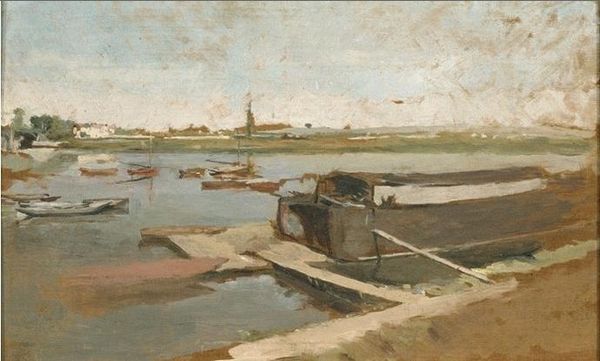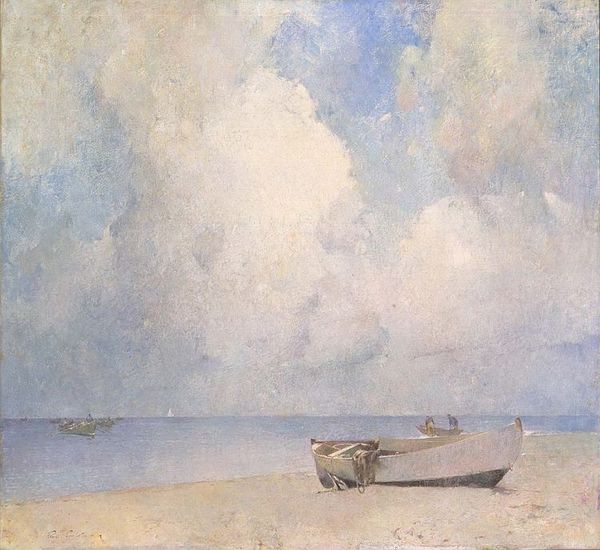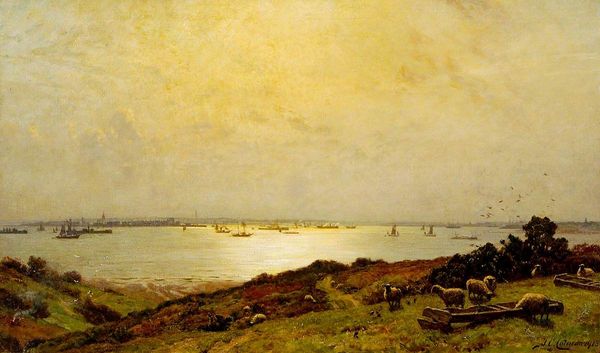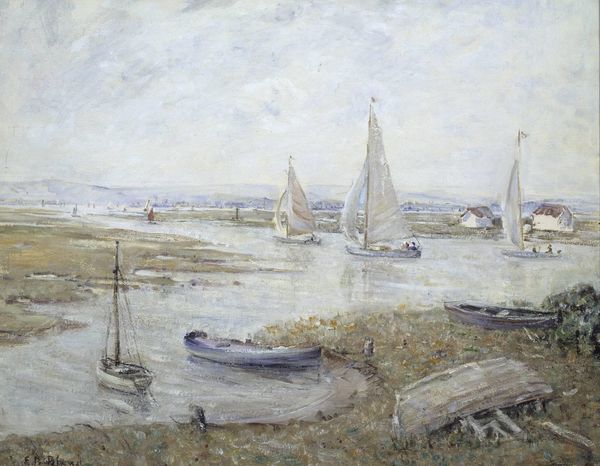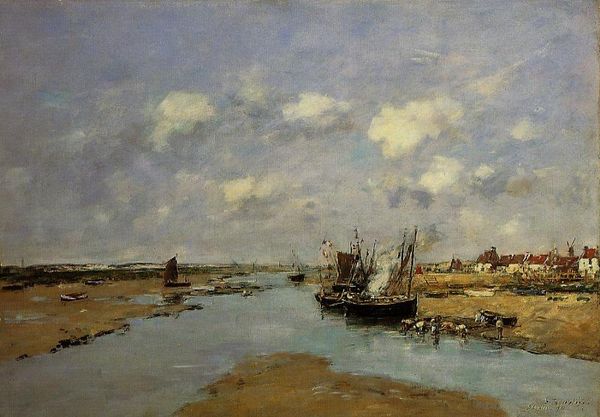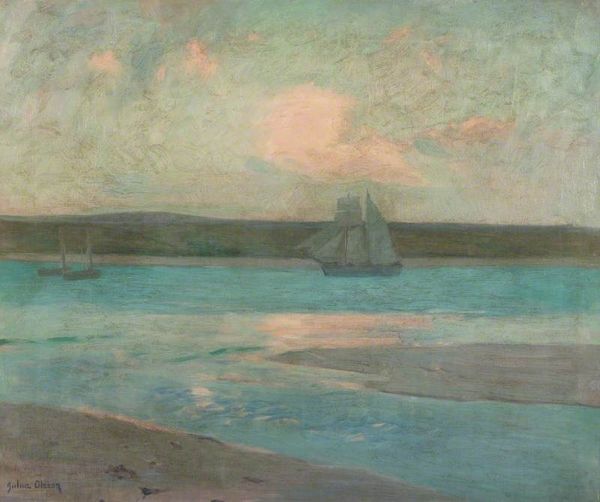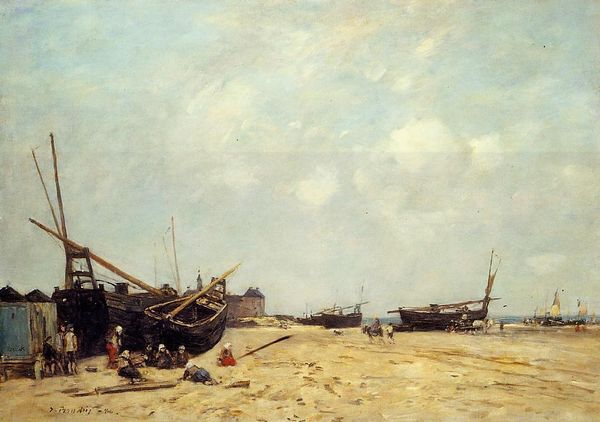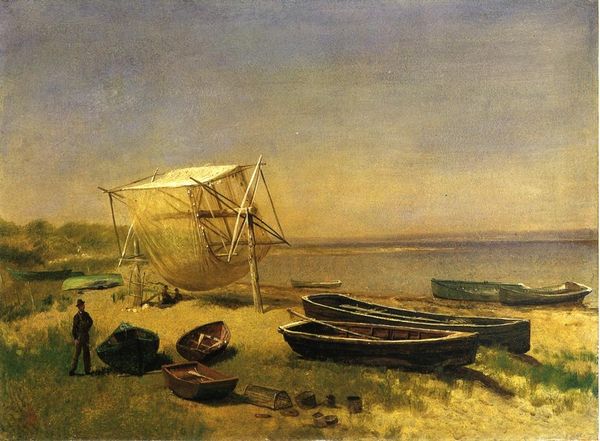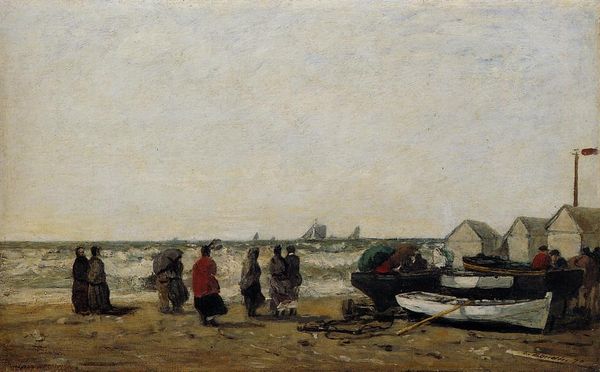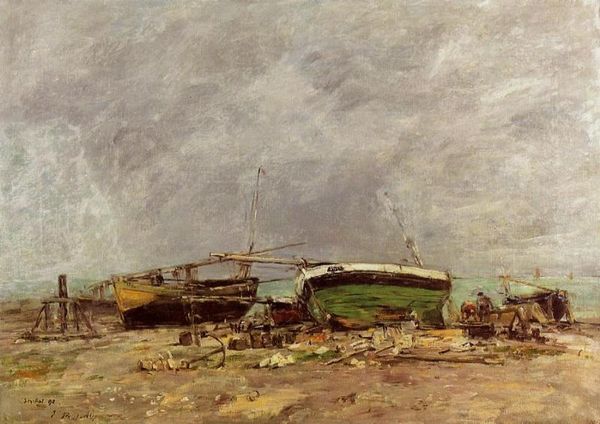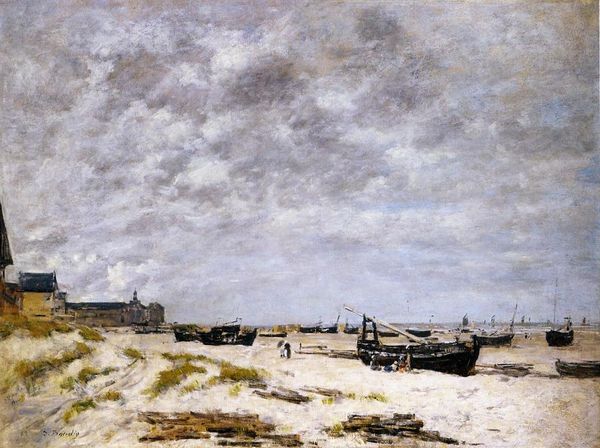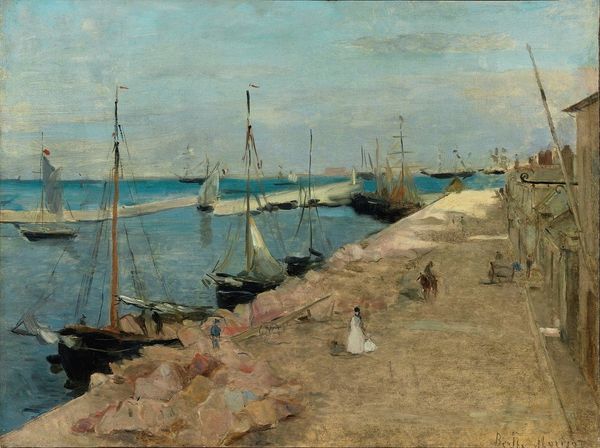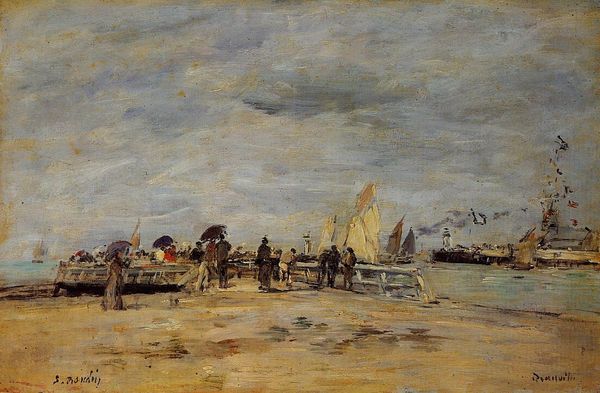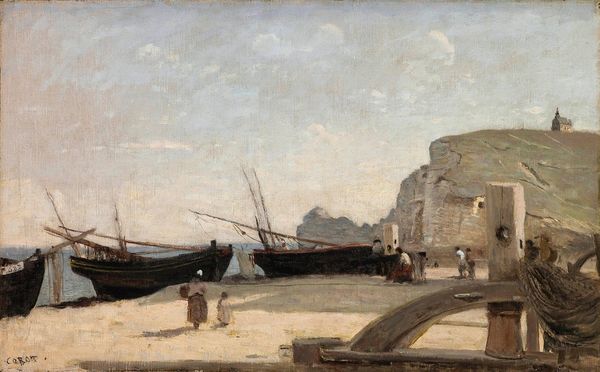
painting, plein-air, oil-paint
#
painting
#
impressionism
#
plein-air
#
oil-paint
#
landscape
#
painted
#
oil painting
#
watercolor
#
realism
Dimensions: 45.5 x 61 cm
Copyright: Public domain
Curator: Welcome. Before us hangs Walter Osborne’s oil on canvas, “Estuary at Walberswick,” painted in 1885. A quintessential example of Impressionism rendered through the lens of Irish Realism, don’t you think? Editor: It breathes. The stillness is palpable; I almost feel the dampness of the estuarine air on my skin. The figures seem so relaxed, utterly without agenda, truly human in their environment. Curator: Absolutely, Osborne aimed to capture fleeting moments of everyday life, particularly through the lens of plein-air painting, making his work about working class existence visible in the broader landscape. His time in France certainly had its affect here. Editor: And observe his masterful brushstrokes! Quick, light touches of color, the kind that seeks to capture not necessarily detail, but more importantly atmosphere and light. It’s social commentary, I suppose, in the very fact that he’s valuing their moments of respite at all. Curator: The choice of subject reinforces Osborne's position within the social fabric of his time. Estuaries, neither land nor sea, often represented transitional spaces – a liminality mirrored in the shifting socio-political climate of 19th century Ireland, constantly oscillating under British rule. The presence of the figures then marks it with Irish occupation, making the British colonial project itself a thing defined by impermanence. Editor: Very powerful to think about it in those terms! And these colors--those muted, natural earth tones, interspersed with that vast open sky...I’m struck by a distinct lack of idealization. He renders his subjects without any hint of romanticizing, choosing truth and immanence over all else. Curator: A reflection, certainly, of the emerging realist aesthetic but further contextualizing the Irish people themselves, to exist. The ordinary now possessing worth through observation. It gives credence to their very state of being as inherently dignified. Editor: That focus—on elevating the mundane through close, tender observation-- that makes all the difference. Thanks for expanding how I look at the imagery through those historical considerations. Curator: My pleasure, thank you. I'm still taken by how much the materiality can reveal about those histories and the politics embedded into a supposedly neutral landscape.
Comments
No comments
Be the first to comment and join the conversation on the ultimate creative platform.
